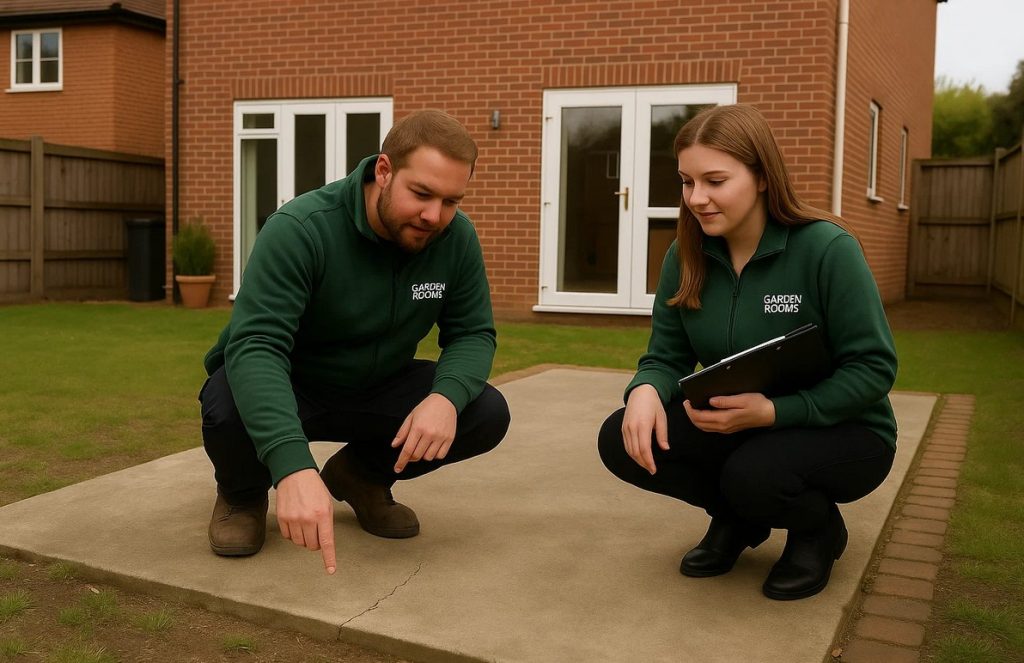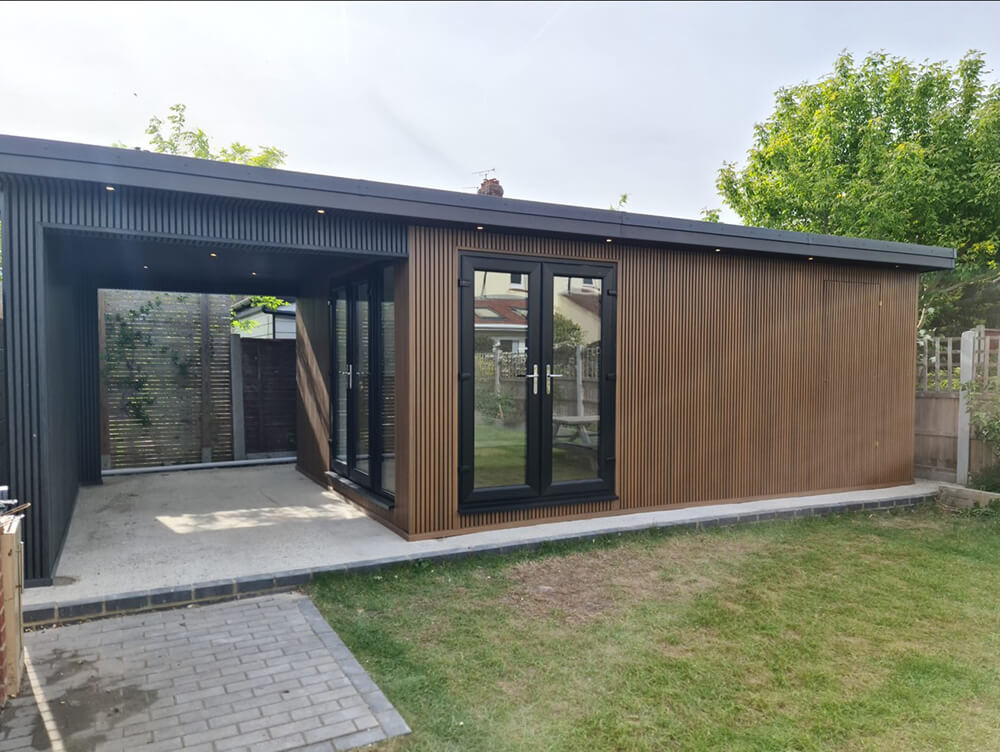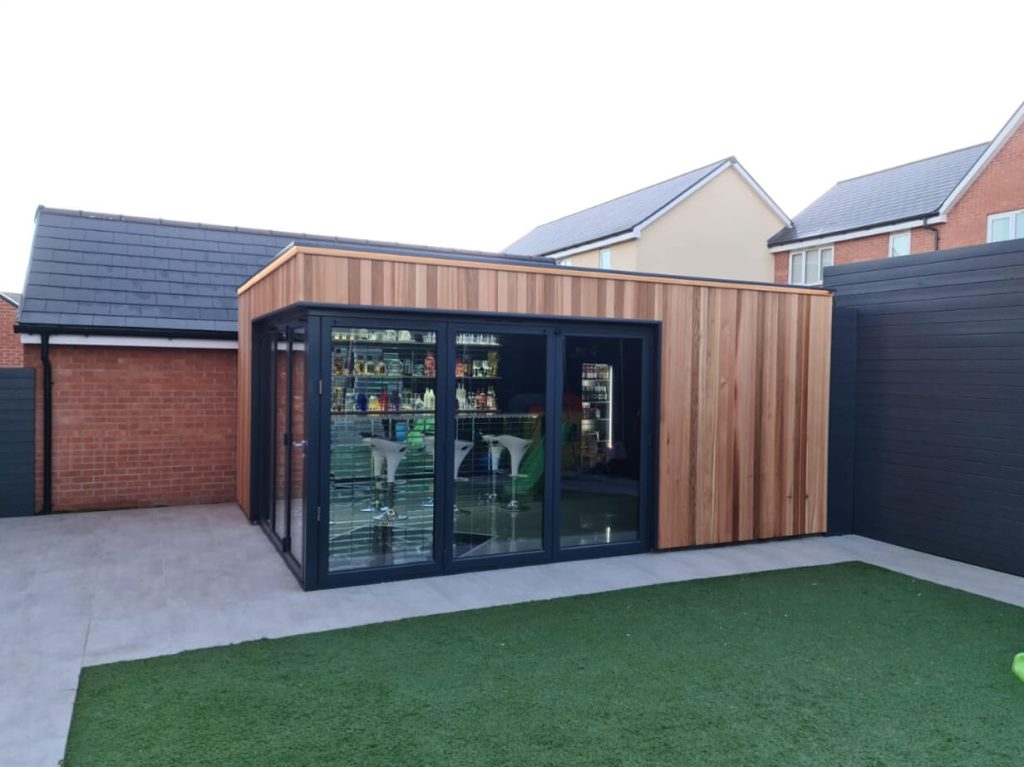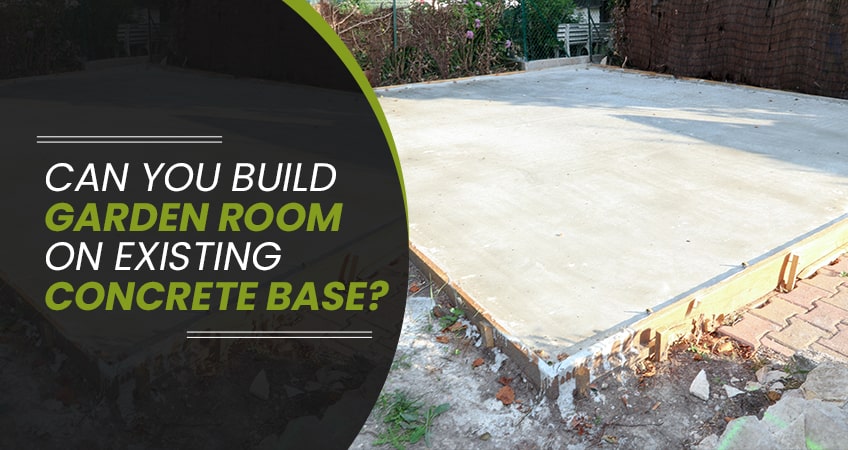If you’re dreaming of a beautiful garden room but already have a concrete base taking up prime backyard real estate, you might be wondering, “Can I use this existing base?” It’s a common question for homeowners who want to save time, money, and effort when designing their perfect outdoor retreat.
The short answer is often yes! But there are crucial factors to consider before you start construction. This blog will guide you through the ins and outs of building a garden room on an existing concrete base. By the end, you’ll know the advantages, potential drawbacks, and how to determine if your current concrete pad is up to the job.
Can you build on an existing concrete base?
Yes, you can build a garden room on an existing concrete base, provided it meets certain conditions. The base must be structurally sound, level, well-drained, and large enough to accommodate your garden room. If the slab ticks all these boxes, it can provide a solid foundation for your new structure.
However, if the base doesn’t meet these requirements, it could compromise the stability, insulation, and durability of your garden room. That’s why a thorough assessment of the existing base is key before moving forward. Call us for assistance.
Advantages of using an existing concrete base

Choosing to reuse your existing concrete base comes with several benefits that make it an attractive option for many homeowners.
Cost savings
One of the biggest benefits is cost. Constructing a new foundation can be expensive, especially when you factor in materials and labour. Reusing an existing base eliminates this expense, freeing up more of your budget for garden room features or interior design.
Time efficiency
Laying a new concrete base can take days or even weeks, depending on the size and weather conditions. By using an existing base, you can skip this step and speed up the whole project, allowing you to enjoy your garden room sooner.
Environmental benefits
Repurposing what you already have is an eco-friendly choice. It reduces waste and lowers the carbon footprint associated with producing and transporting new construction materials.
Disadvantages and potential issues
While reusing an existing base has its upsides, it’s not without potential challenges.
Structural integrity
The existing slab must be in good condition to support the weight of your garden room. Cracks, crumbling edges, or signs of movement may render it unsuitable.
Insulation
Concrete bases are notorious for poor thermal performance. Without adequate insulation between the base and your garden room flooring, you could find the space chilly in winter and uncomfortable underfoot.
Drainage problems
Poor drainage around or underneath the concrete slab could lead to moisture issues, which can cause long-term damage to your garden room.
Size and positioning constraints
Your existing concrete base may not match the exact dimensions or location you envision for your garden room. This can limit your design options or require costly adjustments.
Assessment checklist

If you’re considering using your existing concrete base, run through this checklist to determine its suitability.
- Size: Is the base large enough to accommodate your garden room, including any overhangs or eaves? Click here to check more.
- Level surface: Use a spirit level to check if the surface is even. A sloped or uneven slab will complicate construction.
- Structural integrity: Look for cracks, crumbling, or signs of water damage.
- Drainage: Confirm that water doesn’t pool on or around the base during rainfall.
- Positioning: Verify that the base is situated where you want your garden room and adheres to any relevant building regulations.
If your concrete base passes these checks, it’s a strong candidate for reuse.
Alternatives if the base isn’t suitable

Not every existing base will be fit for purpose, but that doesn’t mean you’re out of options.
Reinforcing the base
If the slab is mostly in good condition but has small cracks or flaws, it may be possible to repair it with patching compounds or reinforcement techniques.
Leveling the surface
For slightly uneven bases, self-levelling compound or floor levellers can create a flat, stable surface for construction.
Building a new base
If your current base is beyond repair or doesn’t fit your vision, starting fresh with a new concrete base or an alternative like a timber or steel frame is the best option.
Legal and planning considerations
When building any garden structure, including a garden room, it’s critical to check local building regulations and planning permissions. Failure to do so could result in fines or the need to dismantle your structure.
Key points to check
- Height restrictions for outbuildings
- Proximity to shared boundaries
- Listed property or conservation area regulations
- Building inspection requirements for larger or more permanent structures
Consulting a professional installer like Garden Rooms 365 can help you navigate these legalities with ease.
Building your perfect garden room
Reusing an existing concrete base is entirely possible, provided it meets the right standards. While the approach can save time, money, and resources, it’s crucial to assess and prepare the base thoroughly to avoid potential complications down the line.
Contact us today for a free quote and get one step closer to your perfect garden retreat!
Whether you’re ready to start building or still evaluating your options, Garden Rooms 365 is here to help.
Our experts can provide a detailed assessment of your existing base, offer tailored advice, and guide you every step of the way.
Reach out today for professional advice and a free, no-obligation quote.



